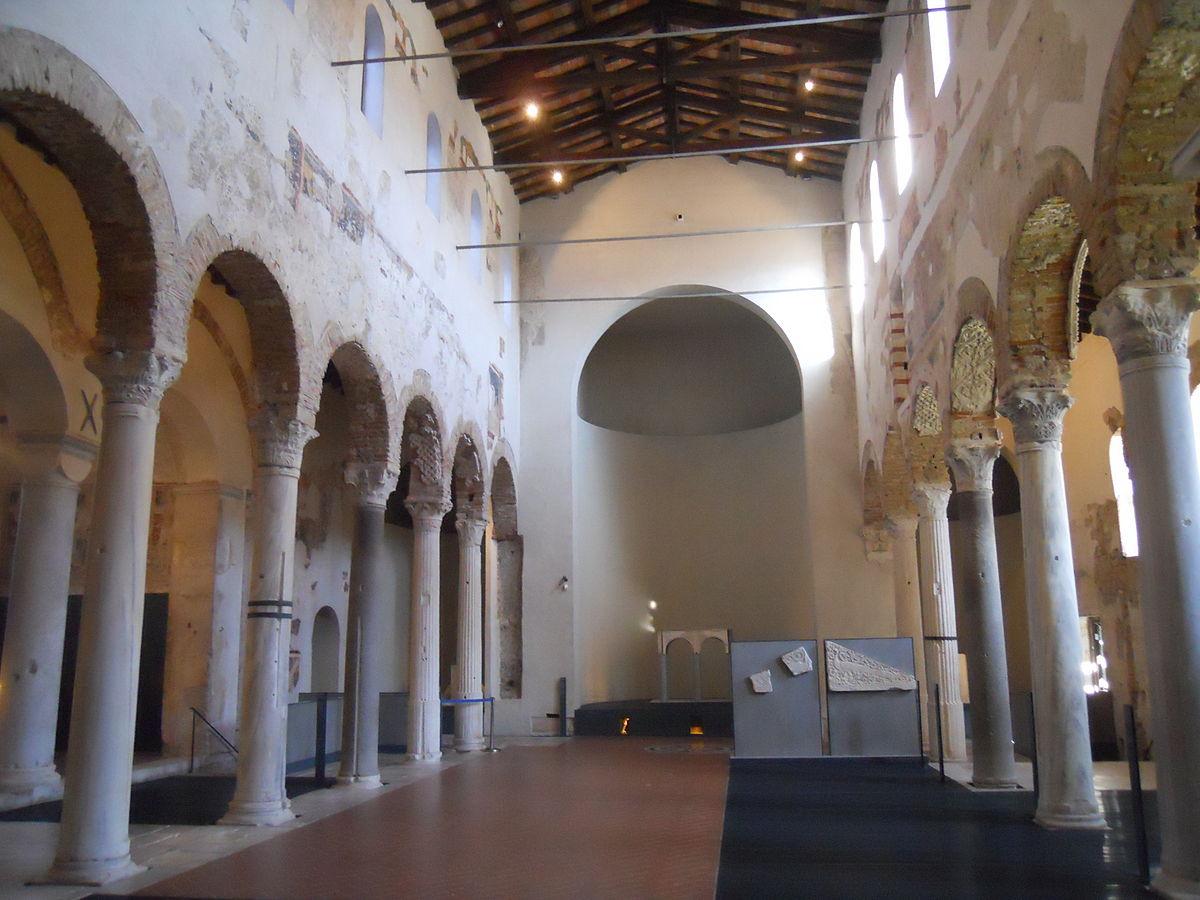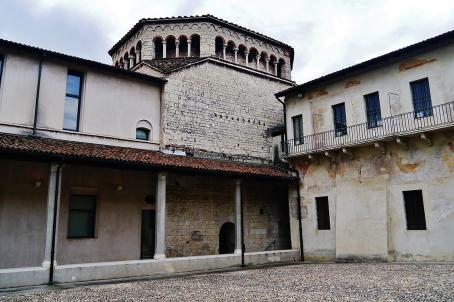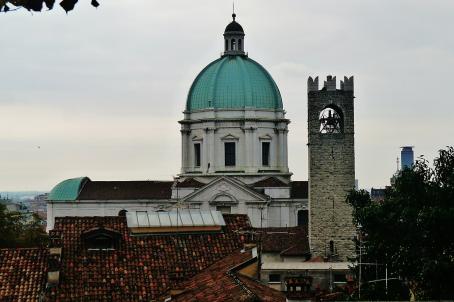Basilica of San Salvatore
The Basilica of San Salvatore was founded in 753 as the church of the female monastery of San Salvatore and was completed more than eight centuries later, in 1599. Of the original church, only the structure with three naves marked by columns and capitals is preserved. The church is entirely decorated with some of the richest and best-preserved stuccoes and frescoes of the early Middle Ages. The complex is one of the seven UNESCO World Heritage Sites that bear witness to the culture of the Lombard people.






